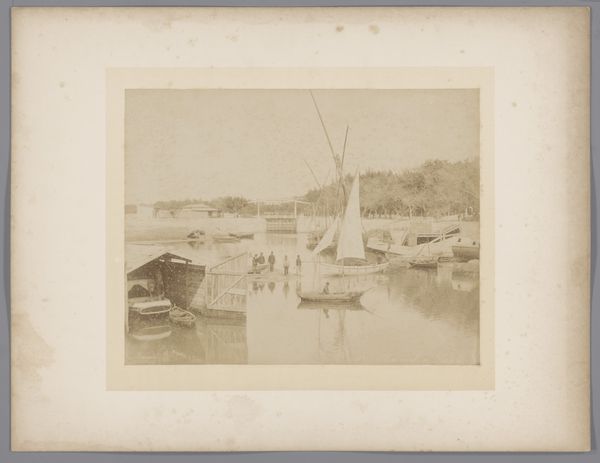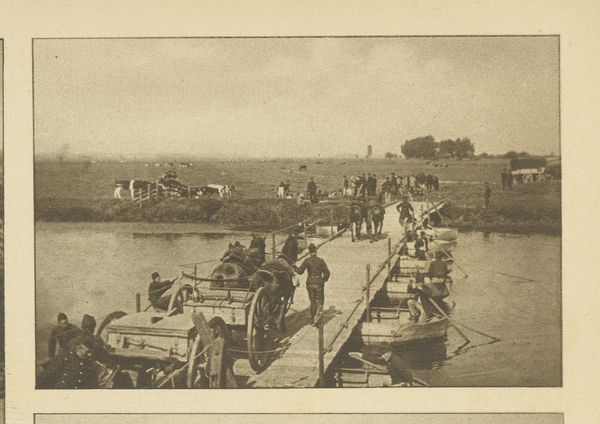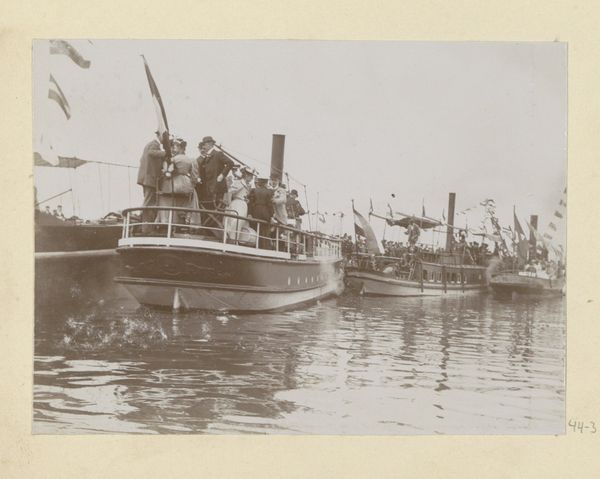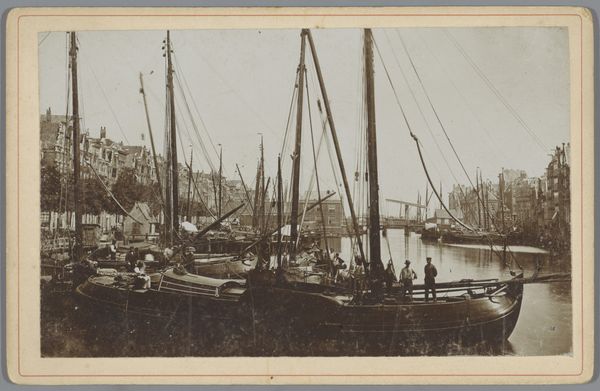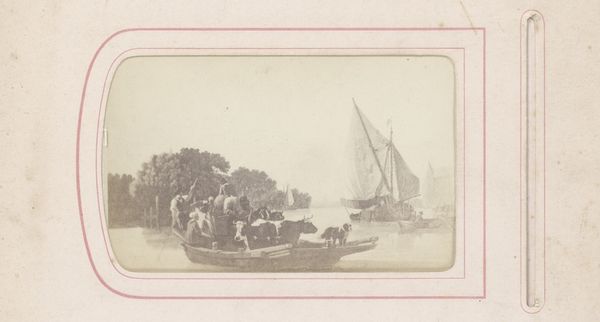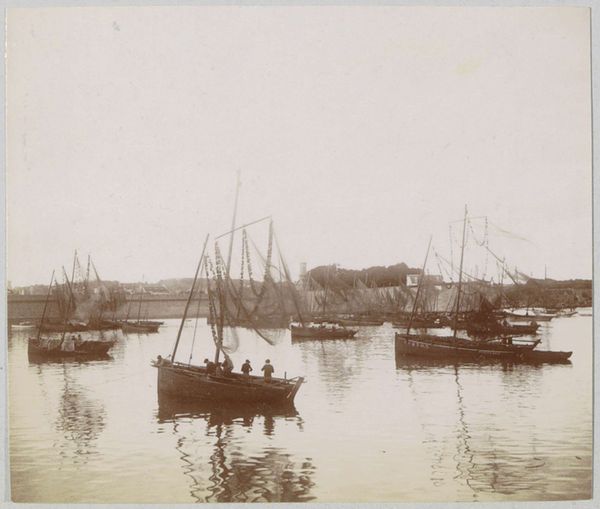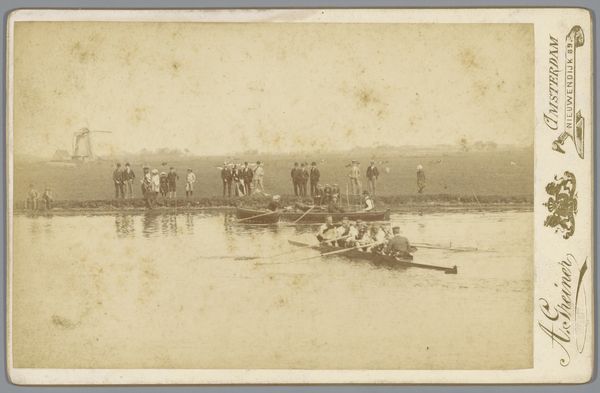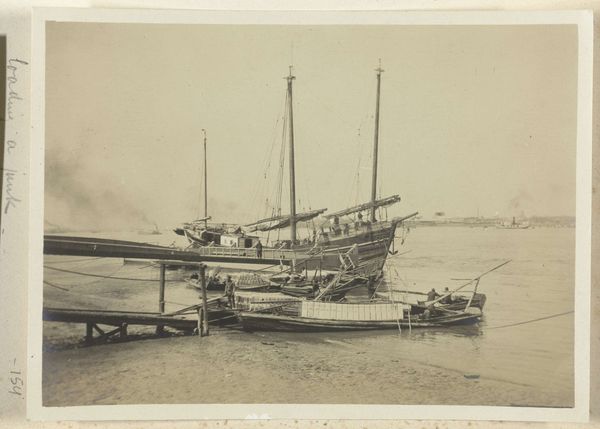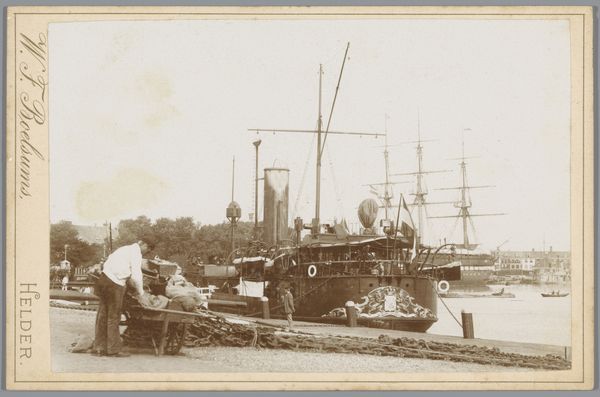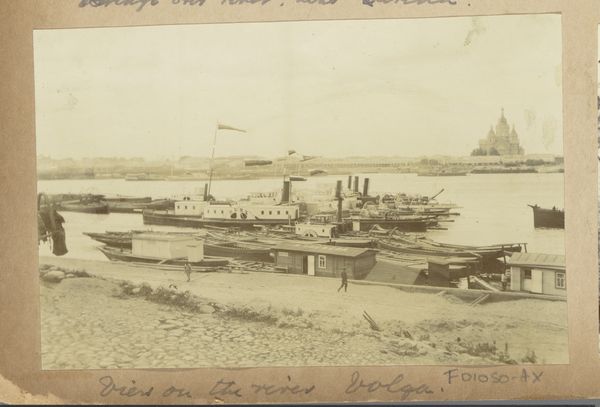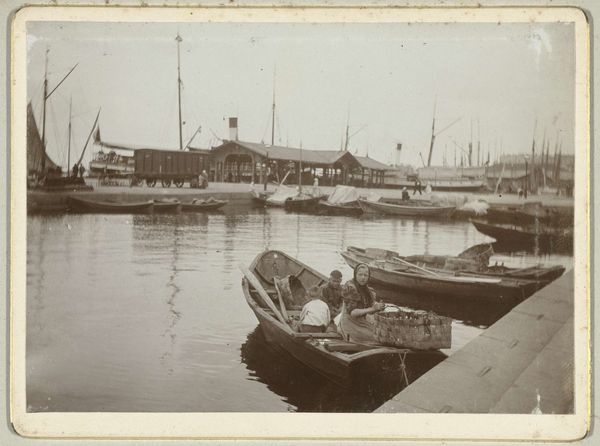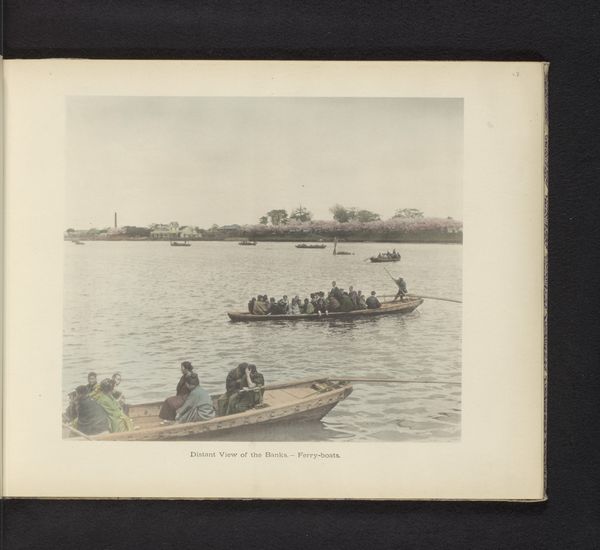
photography, gelatin-silver-print
#
landscape
#
photography
#
orientalism
#
gelatin-silver-print
#
realism
Dimensions: height 155 mm, width 204 mm
Copyright: Rijks Museum: Open Domain
Editor: This photograph, “Haven, in-/uitladen van schepen” by Antoine Sevruguin, dating from around 1880 to 1910, appears to be a gelatin silver print. It depicts a bustling harbor scene. All these barrels and crates give the picture a textured effect... What catches your eye in this work? Curator: The overwhelming emphasis on the materials, of course. We see labor intrinsically linked to material reality. Look at how the composition forces your eye to traverse the mountains of barrels and crates. Editor: That's a really interesting way to put it. The materials do seem to dominate. It almost feels like the people are secondary to the goods they are handling. Curator: Precisely! The focus shifts away from individual stories toward the sheer volume of material being processed. Consider the social context. This photograph wasn't just a pretty picture; it was a document of an economic system. What kind of goods do you imagine are in those containers, and what impact would that type of industry have? Editor: I suppose these barrels may have contained oil or food staples? I hadn't thought about the economics of it but thinking of the boats loaded with export goods reminds me of more contemporary photographs documenting labor conditions. Curator: The print's texture is just another physical record of the process involved in its making. The artist and their practices add meaning to the work too; as opposed to other documentary styles, Antoine Sevriguin had an important place in Orientalism and photographic studios as a family affair in the Middle East. The making of a photograph or a commercial product... what do you think that distinction meant? Editor: That's a great point! Considering the cultural and economic implications that photographic technologies might have, both photographically and the economy it represents. Thanks for the food for thought. Curator: Anytime. Seeing the production process intertwined with social messaging like this allows one to see past it's traditional context as just an attractive vintage document.
Comments
No comments
Be the first to comment and join the conversation on the ultimate creative platform.
